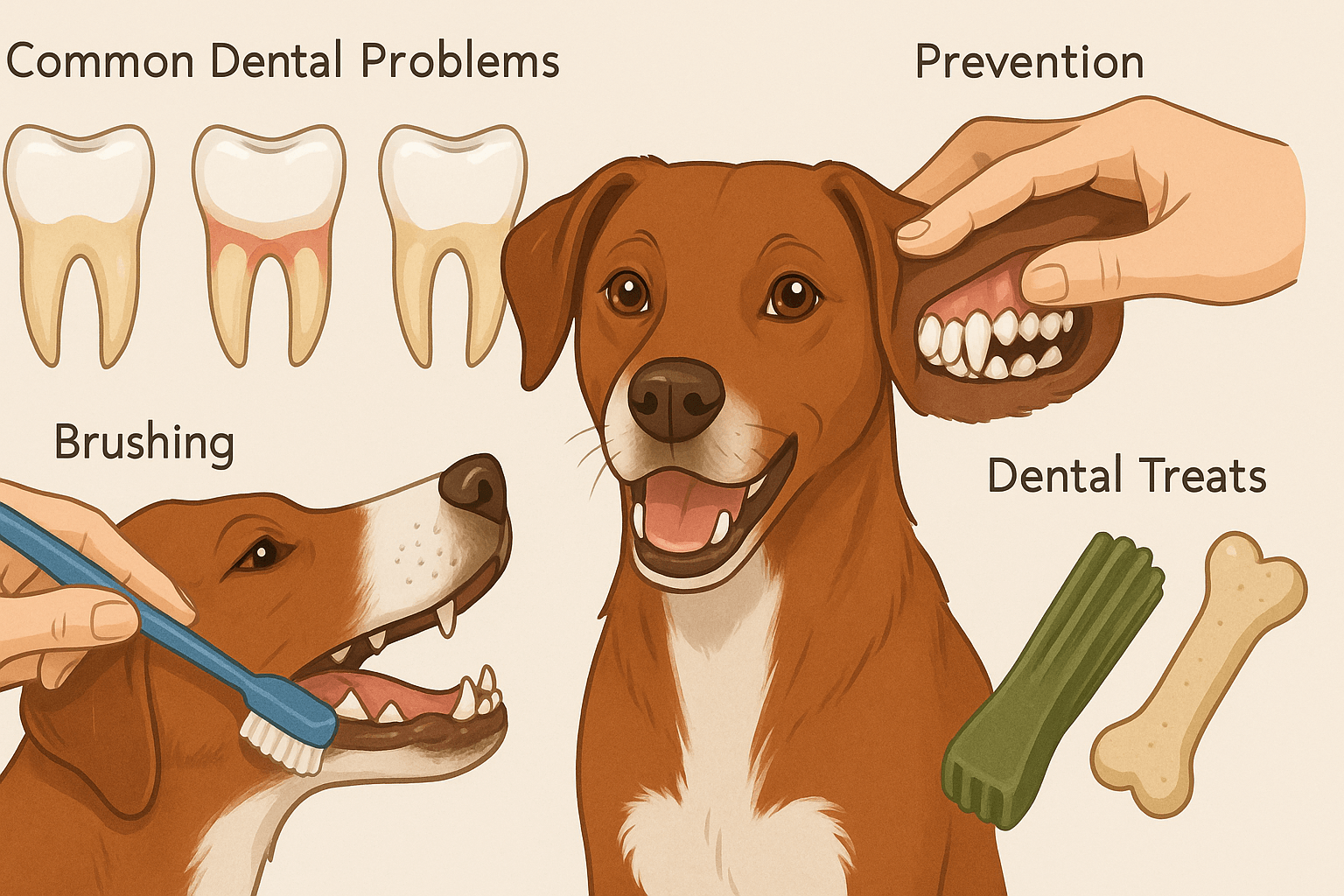If your dog’s breath could knock over a houseplant, it might be more than just "dog breath"—it could be a sign of something serious. Dental health is often overlooked, but it plays a big role in your pup's overall wellness. As a pet blogger and lifelong dog mom, I've seen firsthand how simple habits can save your dog from painful dental issues (and save you from costly vet bills!).
1. Periodontal Disease
This is hands-down the most common dental issue in dogs. Periodontal disease starts with plaque, which hardens into tartar. If left untreated, it can cause inflamed gums (gingivitis), infection, tooth loss, and even affect organs.
Dog gum disease symptoms include:
- Red, swollen, or bleeding gums
- Loose or missing teeth
- Difficulty eating or chewing
- Bad breath
Prevention: Brush your dog’s teeth regularly (yes, really!), and book annual professional dog teeth cleaning with your vet.
2. Plaque and Tartar Buildup
Plaque vs tartar in dogs: Plaque is a soft film of bacteria that forms after meals. If not removed, it calcifies into tartar, which requires professional removal. Tartar irritates the gums and promotes decay.
Home remedies for dog dental care include:
- Daily brushing with dog-safe toothpaste
- Water additives designed for dental health
- Feeding crunchy kibble or dental chews
3. Tooth Fractures
Hard chews, bones, and even antlers can cause cracked or broken teeth. Ouch! Dogs don’t always show pain, but signs of dental pain in dogs include pawing at the mouth, drooling, or avoiding toys.
Pro Tip: Avoid giving your dog anything harder than what you’d knock on wood with. If in doubt, opt for vet-approved best dental treats for dogs.
4. Gingivitis
This early stage of gum disease is reversible—but only if you catch it early. Gums may appear puffy or bleed easily when touched. It’s often caused by poor hygiene or an imbalanced diet.
Prevention tips:
- Use enzymatic toothpaste made for dogs
- Introduce how to brush your dog’s teeth slowly with positive reinforcement
- Consider a high-quality dental diet
5. Bad Breath (Halitosis)
We all expect a little doggy breath—but when it smells like a trash bin, something’s off. Dog bad breath causes range from dental infections to digestive issues.
Solution:
- Rule out underlying illness with a vet visit
- Keep up with regular cleanings
- Incorporate natural breath-freshening treats or water additives
Summary: Keep That Tail Wagging and That Breath Fresh
❤️ Want to go the extra mile? Check out more healthy treats for dogs that support dental health while making tails wag.
Frequently Asked Questions (FAQs)
1. What are early signs of dental disease in dogs?
2. How often should I brush my dog’s teeth?
3. Are dental treats enough to prevent dental issues?
4. What causes my dog’s bad breath?
5. When should my dog get professional teeth cleaning?

About SniffnTail
SniffnTail is your go-to destination for everything pets. From helpful advice, tips, and insights to thoughtfully selected products and resources, we’re here to support pet owners at every stage of their journey. Whether you're caring for a playful pup, a wise old cat, or anything in between, SniffnTail offers tools and knowledge to make pet parenting easier and more joyful.
Related Articles
 Health & Wellness • 7 min read
Health & Wellness • 7 min read10 Common Dog Grooming Mistakes & Vet-Approved Tips to Avoid Them
Avoid these common dog grooming mistakes with expert, vet-approved tips. Learn how to keep your pup healthy and happy with safe grooming practices and proven advice.
 Health & Wellness • 5 mins Read
Health & Wellness • 5 mins ReadSigns and Symptoms of Worm Infestation in Dogs: What Every Pet Owner Should Know
Worm infestations are a frequent canine health issue, but they usually go unnoticed until signs turn serious. Learning to recognize signs of worms in dogs can enable you to take proactive action and save your furry companion from pain—and in some instances, life-threatening illness.
 Health & Wellness • 5 mins Read
Health & Wellness • 5 mins ReadDeworming for Dogs: What Every Pet Parent Needs to Know
Worms are tiny, but they can lead to huge issues for our furry friends. Deworming your dog is not merely a part of common pet maintenance—it's vital for long-term health and well-being. In this article, we'll dissect everything you should know regarding deworming for dogs: the various kinds of worms, how testing is done, best schedules, a quick checklist, and how to avoid future infections.

